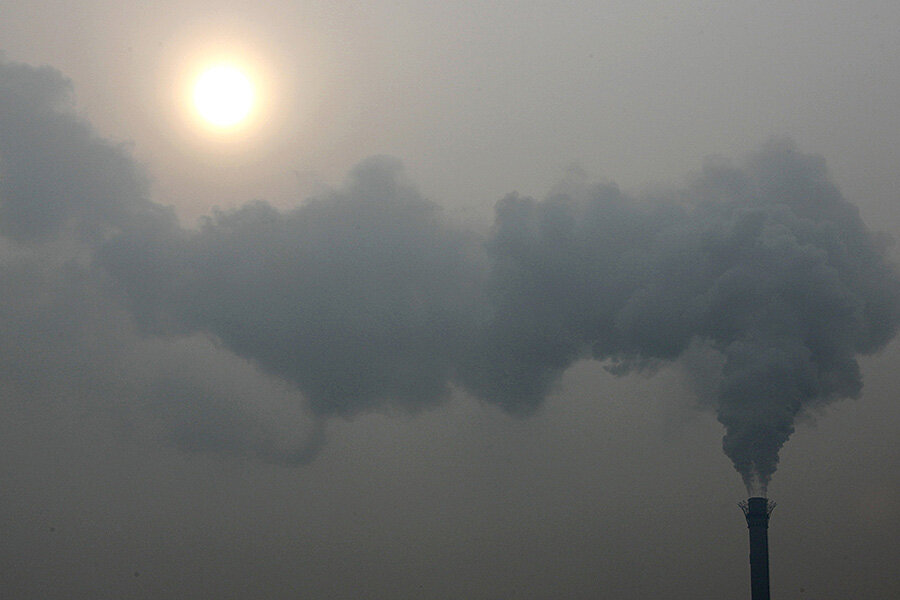In China, a fuel dirtier than coal gains traction
Loading...
| Washington
China has taken steps to reduce the heavy air pollution caused by coal-fired power plants, but a lesser-known pollutant has quietly emerged there as an inexpensive but very dirty alternative to coal.
Petroleum coke, or petcoke, is a byproduct of petroleum refining that contains over 90 percent carbon and is high in thermal value. Chinese companies in various industries have increasingly turned to it since 2006, when the country experienced a fuel shortage.
Much of China’s petcoke comes from the United States, which signed a joint climate agreement with China last November to cut carbon emissions. Combined, the two countries account for over one-third of global greenhouse-gas emissions.
“In China, the petcoke is little known to most of the statistics and even to the energy sector itself, so we cannot find the official data of the petcoke consumption in the national statistics book,” Wang Tao, resident scholar at Carnegie-Tsinghua Center for Global Policy, said in a Wednesday discussion at Carnegie Endowment for International Peace. “They don’t even have the category of petcoke until 2010.”
Low-sulfur petcoke is widely used in metal manufacturing, where it usually will not be burned and does not cause as much pollution as high-sulfur petcoke, which is burned to fuel industries such as glass, ceramics, and cements. The high-sulfur petcoke releases sulfur dioxide and many other contaminants, Mr. Wang said.
“We have paid much attention to the coal-fired power plants since the Chinese central government became aware of air pollution issues,” Wang said. “But the standards for those [glass, ceramic and cement] industries are still lagging behind.”
In addition, many of those industries are located in remote areas in China, according to Wang, and contribute huge revenues to the region’s local governments.
The United States is the dominant exporter of high-sulfur petcoke to China, accounting for nearly 75 percent of China’s total petcoke imports in 2013, according to Wang’s analysis.
According to the US Energy Information Administration, US petcoke exports to China jumped from just under 2 million barrels in 2008 to 38.4 million barrels in 2013. Last year, that figure dropped to 20.2 million barrels, according to EIA.
In the United States, “petroleum coke is often understood to be in the same category that coal is,” Richard Lattanzio, environment policy analyst at the Congressional Research Service, said in the discussion. “And a lot of the rules and regulations that we have on our power plants are nondiscriminating. If a fuel releases sulfur dioxide due to its combustion, it doesn’t matter if it’s petroleum coke or coal, there are controlled technologies.”
To reduce China’s environmental dangers from burning petcoke, Wang suggested cleaner petcoke combustion technology, such as circulating fluidized bed boilers that could absorb pollutants before they are emitted to the atmosphere. In addition, economic instruments, such as import tariffs, could also discourage the use of petcoke.
This article was produced in collaboration with Northwestern University's Medill School of Journalism.





